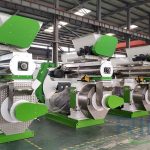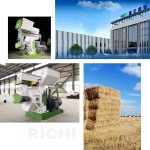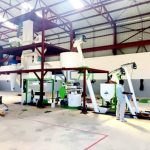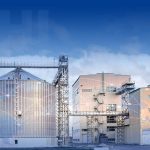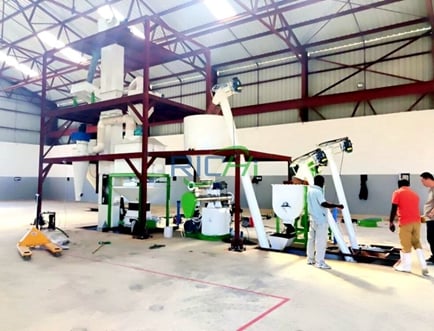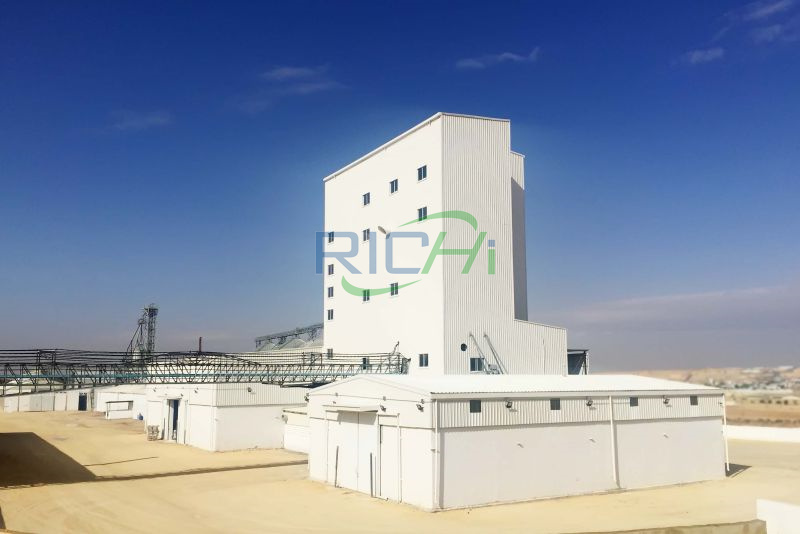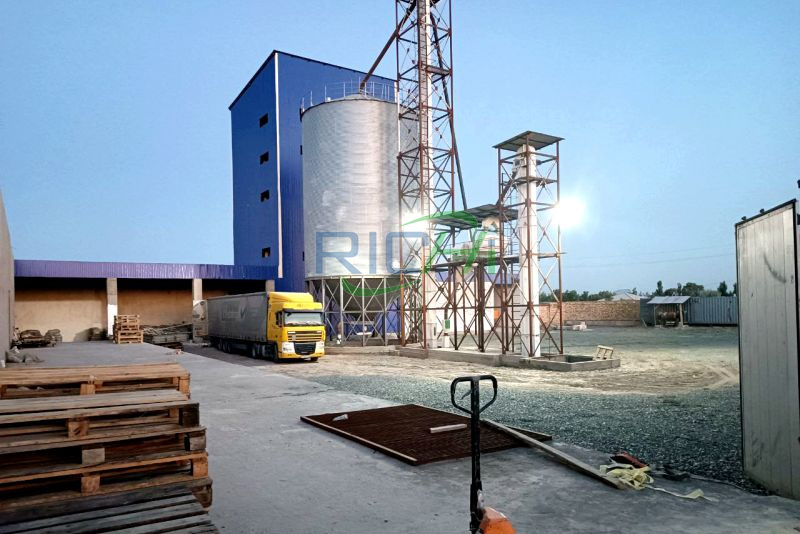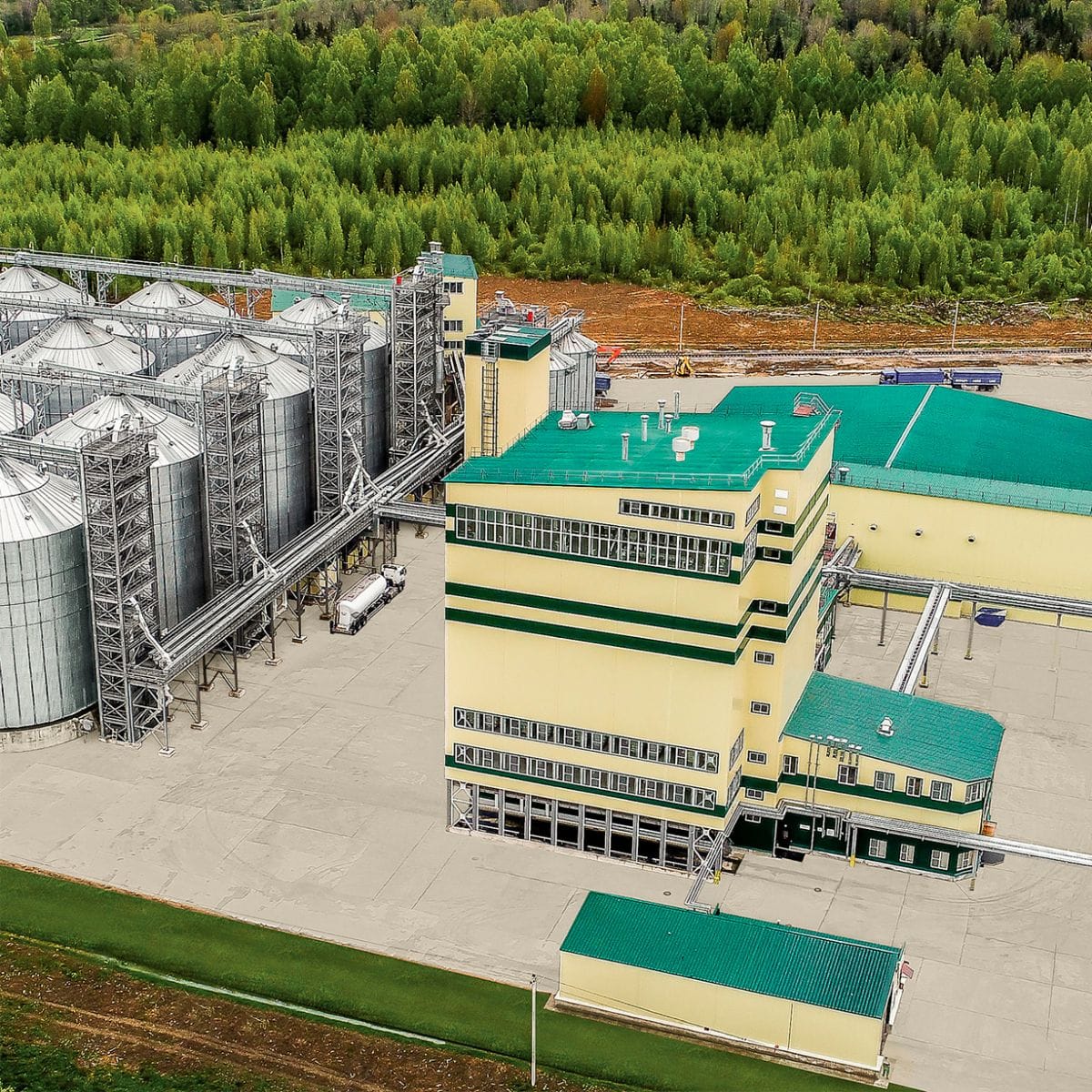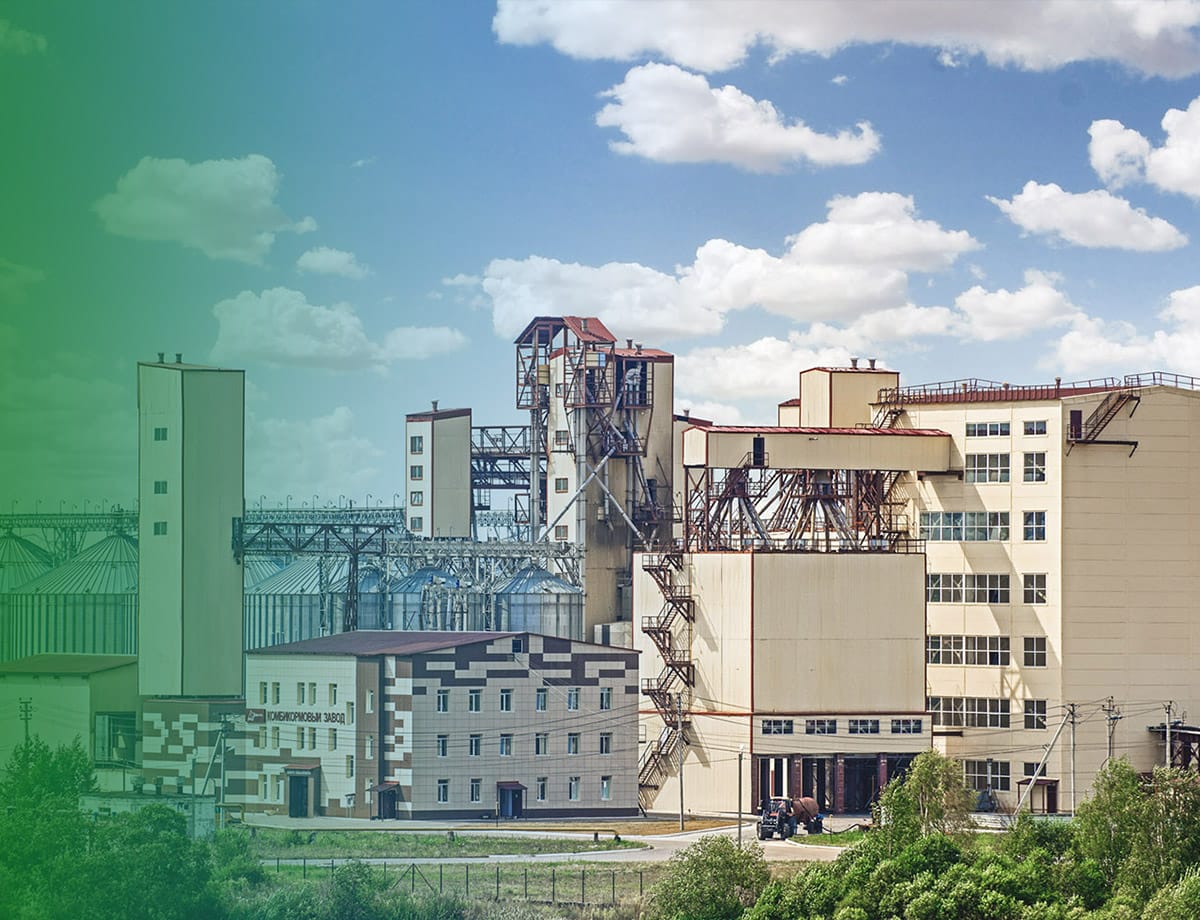Here are some common problems that may be encountered during the installation, commissioning, and use of a 1-2T/H animal feed production line, along with professional solutions:
1. Alignment Issues During Installation
Problem: Misalignment of machinery during installation can lead to increased wear and tear, reduced efficiency, and potential equipment failure.
Solution:
- Ensure precise alignment of all components, such as the hammer mill, mixer, and pellet mill, according to the manufacturer’s specifications.
- Use laser alignment tools or precision measuring instruments to verify alignment.
- Regularly check and adjust alignment during routine maintenance.
2. Inconsistent Feed Quality During Commissioning
Problem: Inconsistent feed quality, such as uneven pellet size or poor nutrient distribution, can arise during the initial commissioning phase.
Solution:
- Perform thorough calibration of the dosing and mixing systems to ensure accurate ingredient proportions.
- Verify that the grinding process produces uniform particle sizes to facilitate consistent mixing.
- Conduct multiple test runs and adjust parameters such as mixing time, pellet mill die size, and temperature settings to achieve the desired feed quality.
3. Blockages in the Pellet Mill
Problem: Blockages can occur in the pellet mill due to improper material flow, leading to production downtime.
Solution:
- Ensure the raw material moisture content is within the recommended range (typically 10-12%) to avoid sticky or overly dry feed.
- Regularly clean the pellet mill die and rollers to prevent material build-up.
- Install sensors to monitor material flow and automatically shut down the system if a blockage is detected, preventing damage to the equipment.
4. Electrical and Control System Failures
Problem: Electrical failures or control system malfunctions can disrupt the production process and lead to safety hazards.
Solution:
- Conduct a thorough inspection of all electrical connections and components during installation to ensure compliance with safety standards.
- Implement a robust control system with fail-safes and redundancy features to minimize the risk of failure.
- Train operators on how to troubleshoot common electrical issues and have a maintenance plan in place for regular inspection and testing of electrical systems.
5. Excessive Wear on Critical Components
Problem: Critical components such as the hammer mill hammers, pellet mill die, and rollers can experience excessive wear, reducing the lifespan of the equipment and leading to frequent replacements.
Solution:
- Use high-quality, wear-resistant materials for critical components, and ensure they are properly maintained and replaced as needed.
- Monitor the wear patterns and establish a predictive maintenance schedule based on the specific operating conditions.
- Optimize the production parameters to reduce stress on these components, such as adjusting the feed rate or reducing pellet mill operating pressure.
6. Noise and Vibration Issues
Problem: Excessive noise and vibration can indicate underlying mechanical problems and may lead to premature equipment failure.
Solution:
- Ensure that all rotating parts are balanced and aligned during installation to minimize vibration.
- Install vibration dampers or isolators where necessary to reduce transmission of vibration to other parts of the system.
- Regularly inspect bearings, belts, and other moving parts for signs of wear and replace them promptly to prevent excessive noise and vibration.
7. Inadequate Dust Control
Problem: Poor dust control can lead to environmental hazards and pose a risk to worker health.
Solution:
- Install an efficient dust collection system that meets local environmental regulations and ensures clean air quality in the production facility.
- Regularly inspect and maintain dust collection equipment, such as filters and ductwork, to ensure they are functioning correctly.
- Implement housekeeping practices that minimize dust accumulation in the work area.
8. Inaccurate Ingredient Dosing
Problem: Inaccurate dosing of ingredients can lead to suboptimal feed formulations, affecting the nutritional value of the feed.
Solution:
- Calibrate dosing equipment regularly to ensure precise measurement of ingredients.
- Implement automated dosing systems with real-time monitoring to detect and correct any discrepancies during the production process.
- Train operators to recognize and respond to dosing errors quickly.
Summary
By addressing these potential problems proactively during installation, commissioning, and regular use, you can ensure the efficient and reliable operation of your animal feed plant. Proper planning, regular maintenance, and operator training are key to minimizing downtime and maximizing the lifespan of the equipment.
Related: https://www.richimanufacture.com/2t-wood-pellet-plant-in-romania/


